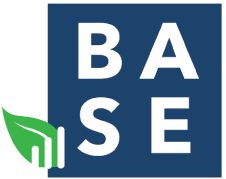If leadership isn’t about dangling a carrot or waving a stick, what does it mean to lead?
Forget about using positional power to control the team or leveraging external motivation to incentivize behaviour. Doing so might deliver short-term results but the long-term impact will be disengagement and high turn-over.
FROM TRADITIONAL HIERARCHY TO SHARED RESPONSIBILITY
The traditional hierarchical model of work, with a concentration of power at the top, has persisted since the industrial revolution. Assembly-line labour was in its infancy and Taylorism — which treats people as cogs in a machine to improve productivity — was the scientific management practice of the day.
As we enter the next societal evolution, we are operating in a far more complex global economy. The way we work has shifted with dynamic human systems of shared responsibility and accountability replacing top-down leadership models.
THE ROLE OF LEADERS IN SELF-MANAGING ORGANIZATIONS
Leaders in the new paradigm focus on ensuring six necessary roles are filled in their organizations. When you hear terms like “Space Holder”, “Purpose-sensor”, “Communication orchestrator”, “Culture steward”, “Resource balancer” and “Organization Protector” does something spark? Is your curiosity saying let’s dig deeper?
These roles, covered in detail in Chapter 1 of Lead Together, are integral to successful leadership in progressive organizations. They can be filled by anyone with the passion and skill to do them, with founders and CEOs often stepping into the roles on behalf of their organization. The more purposefully your team goes about naming and assigning these roles based on an individuals’ personal gifts, the stronger your team will be.
In this post, I’d like to highlight two roles that may spark some lightbulb moments for you as a leader.
- Space Holder
As a founder, you’re comfortable with ambiguity. You’re able to navigate complexity, see the big picture and integrate all that is evolving around you at top speed. You’re able to welcome the unknown while remaining grounded in a bigger purpose.
Holding space (physical, mental and emotional) is perhaps the single most important leadership capacity needed in progressive organizations. The process may appear passive to an observer but is an active, deliberate and often demanding leadership practice.
When you’re holding space, you listen, think and engage differently. You cultivate curiosity and engage with (rather than resist) whatever comes up in the moment. You respond from an inner knowing that moves beyond what the data, analysis or plan might otherwise suggest. When you hold space, you engage with the unfolding future and guide the organization based on what is happening in the moment rather than attempting to control what can’t be controlled. Being that constant in a sea of uncertainty brings comfort to the team and enables them to endure, learn and grow. - Organization Protector and Boundary Holder
Finding the middle ground between micromanagement and a laissez-faire approach can be a bumpy journey. Potholes along the way are inevitable. Your team is going to make some poor choices. You know it. They know it. You see what’s going to happen. Should you step in? Not always. Reflexively taking the wheel to avoid all obstacles may do more harm than good.
When your team hits a pothole, it learns. When it drives off a cliff, it dies. Organization Protectors and Boundary Holders avoid the temptation of micro-managing the avoidance of every pothole. Individuals and coaches can navigate those challenges and the learnings that come from them. The cornerstone of successful self-management is the ability to make bad calls, bounce back from them and learn how to adapt the next time around.
In the words of Simon Wakeman, “If you try to be a very directive leader, you can break the [self-managing] system very quickly. But there are times when you have to be directive because you need to stop something from going off the cliff.”
You’re intervening at limited times and in limited ways to protect the organization’s well-being. You’re playing a key role in preventing a catastrophic cliff drop. You’re signposting actively and neutralizing threats that could have a long-lasting impact on the business.
LEADERS ARE IMPERFECT ROLE MODELS ON A JOURNEY OF LEARNING
Choosing where to lead and where to step back takes courage, trust and a high degree of self-awareness. None of the leaders I’ve met have been exceptional at all elements of leadership. Nor do they aim to be. Instead, they show up as imperfect role models on a journey of learning. They understand their colleagues will sometimes make poor decisions, just as they will. Their focus is on creating an environment where passionate people work toward a common purpose, learning and growing along the way. When things go awry, these leaders look inward first.
The next time your team heads for a pothole, resist the urge to step in.
I help Founder CEOs of companies between 5 & 40 people who are experiencing early stage success and ready to scale — especially those wanting to build shared responsibility and accountability within their team. Click here to get your free copy of the 5 principles and 6 leadership roles for scaling a sustainable, prosperous company.







